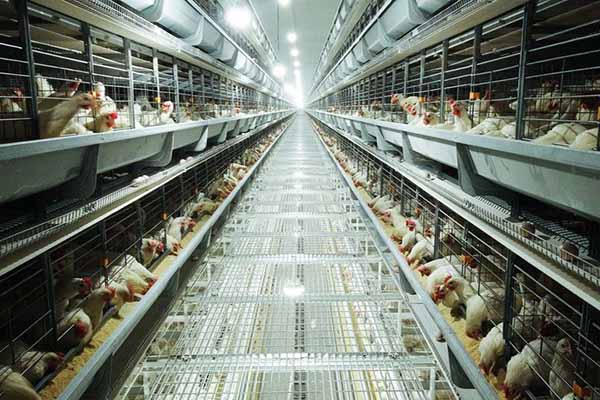15000 Broiler Chicken Cage System: A Comprehensive Guide
Time : 2025-06-28
The broiler chicken industry is one of the fastest-growing sectors within the poultry industry. As the demand for chicken meat continues to rise, efficient and effective production systems are crucial for maximizing profitability. One such system is the 15000 broiler chicken cage system. This article provides a detailed overview of the 15000 broiler chicken cage system, its components, advantages, and considerations for implementation.
Introduction to the 15000 Broiler Chicken Cage System
The 15000 broiler chicken cage system is a highly efficient and space-saving method of raising broiler chickens. It is designed to accommodate a large number of birds, typically up to 15,000, in a controlled environment. This system is ideal for commercial poultry farmers who require a high-density, high-output production setup.
Components of the 15000 Broiler Chicken Cage System
The 15000 broiler chicken cage system comprises several key components:
1. Cages
The heart of the system, the cages are constructed from high-quality, durable materials to ensure the safety and comfort of the birds. Each cage is designed to accommodate a specific number of chickens, depending on the breed and size.
2. Feeding System
An automated feeding system is an essential component of the 15000 broiler chicken cage system. This system ensures that the birds receive a consistent and balanced diet, which is crucial for their growth and development.
3. Watering System
A reliable watering system is vital for maintaining the health of the chickens. The system should provide continuous access to fresh water, ensuring that the birds remain hydrated at all times.
4. Climate Control
The broiler chicken cage system includes a climate control system to regulate the temperature and humidity within the facility. This is crucial for maintaining the well-being of the birds and optimizing their growth rates.
5. Manure Management
Efficient manure management is essential to maintain a clean and hygienic environment for the chickens. The system should include a manure removal system to ensure the continuous removal of waste products.
Advantages of the 15000 Broiler Chicken Cage System
The 15000 broiler chicken cage system offers several advantages over traditional poultry farming methods:
1. Increased Production
The system allows for high-density housing, which maximizes the number of birds that can be raised within a given area. This results in increased production and higher profits.
2. Improved Health and Welfare
The controlled environment of the cage system minimizes the risk of disease and improves the overall health and welfare of the birds.
3. Lower Labor Costs
Automated systems reduce the need for manual labor, resulting in lower labor costs and increased efficiency.
4. Energy Efficiency
The system’s climate control and efficient manure management contribute to overall energy efficiency, reducing operating costs.
Considerations for Implementation
Implementing a 15000 broiler chicken cage system requires careful planning and consideration of several factors:
1. Site Selection
The location of the facility is crucial for its success. Factors such as climate, proximity to markets, and availability of resources should be taken into account.
2. Design and Layout
The design and layout of the facility should be optimized for the specific needs of the birds and the operation. Proper ventilation, lighting, and drainage are essential.
3. Equipment and Technology
Investing in high-quality equipment and technology is crucial for the success of the operation. Ensure that the systems are reliable, easy to maintain, and capable of meeting the needs of the birds.
4. Training and Personnel
Proper training of personnel is essential for the successful operation of the facility. Workers should be knowledgeable about the system and its components.
Conclusion
The 15000 broiler chicken cage system is an efficient and effective method of raising broiler chickens. By providing a controlled environment, the system maximizes production, improves the health and welfare of the birds, and reduces labor and energy costs. However, successful implementation requires careful planning, consideration of several factors, and investment in high-quality equipment and technology.
Tags












